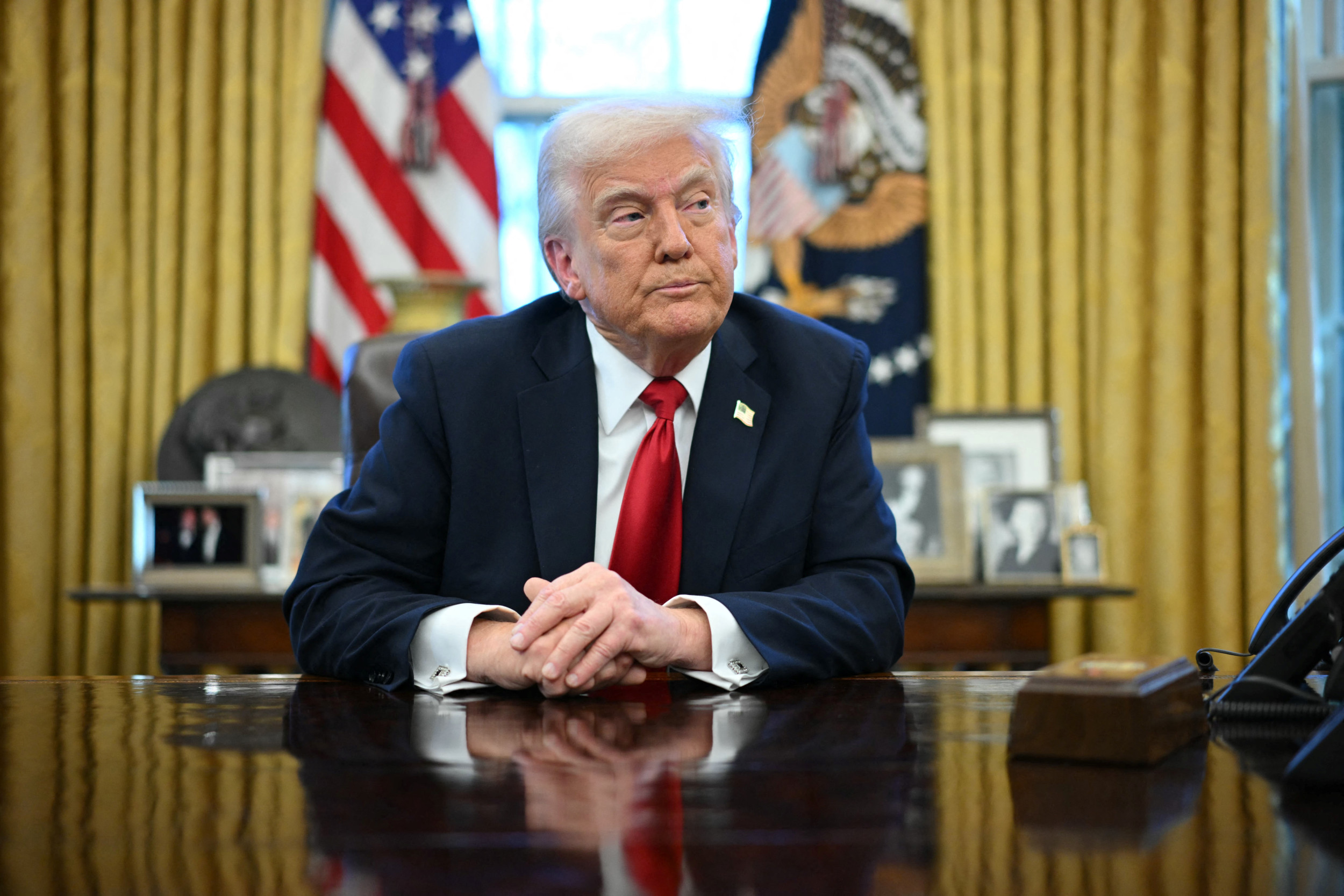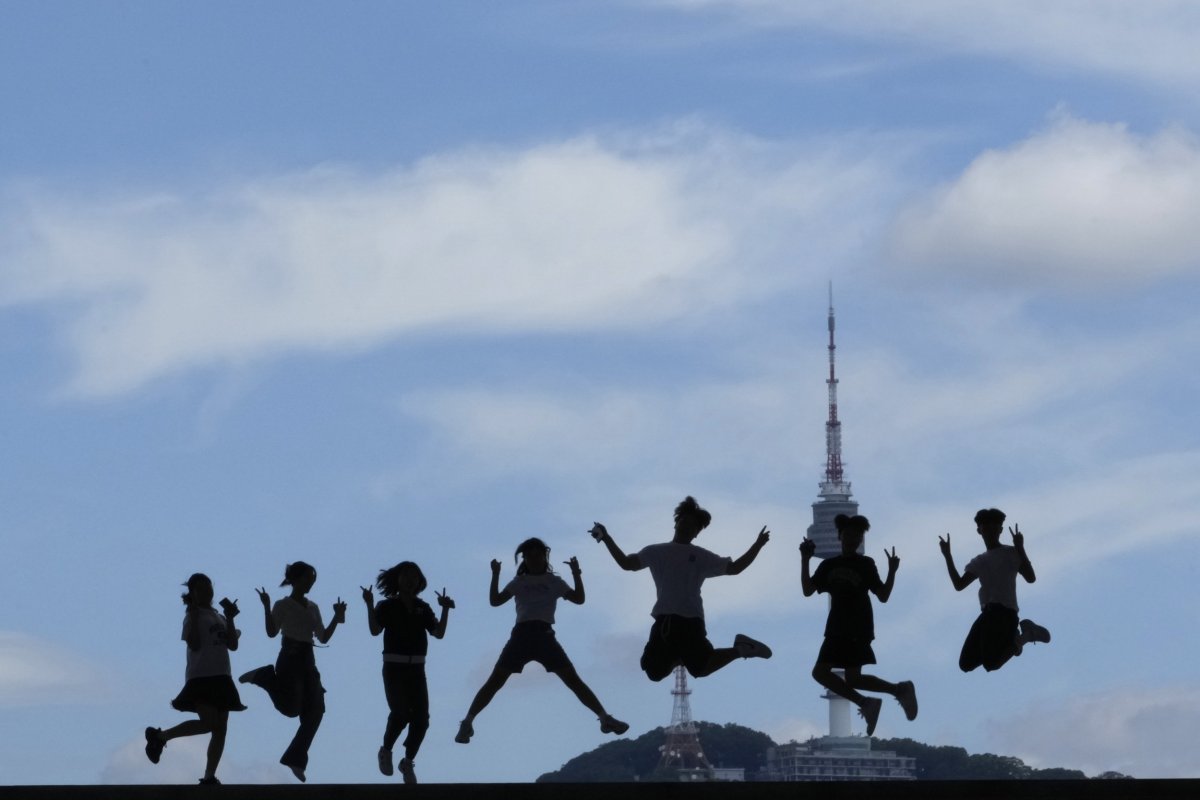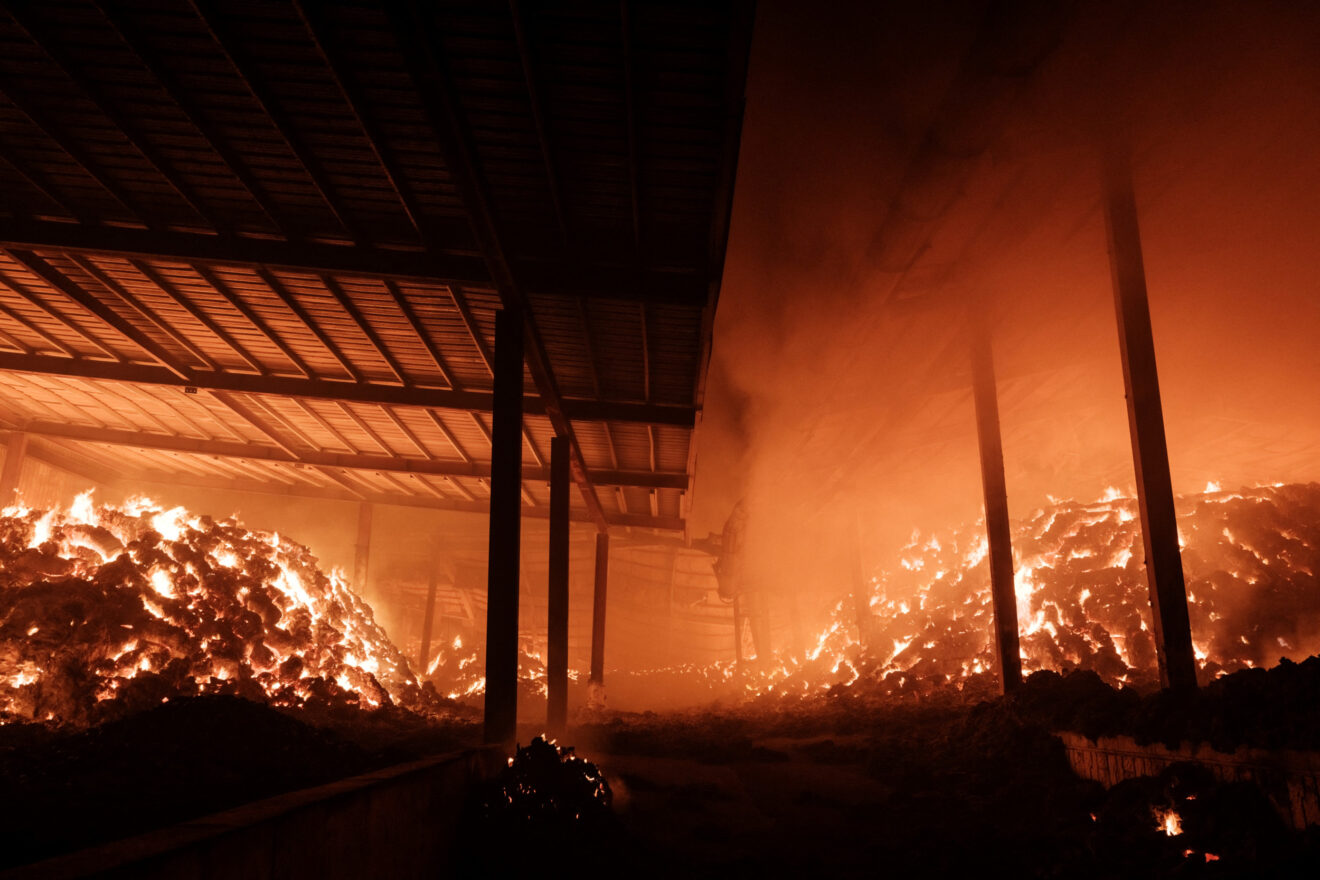“Flames engulfing forests, scorching skies, and a hero’s desperate bid to contain the inferno – a harrowing drama has unfolded in the midst of a devastating wildfire season. A helicopter, a symbol of hope and rescue, has tragically crashed while battling a massive blaze, sending shockwaves throughout the community. As emergency responders scramble to contain the flames and reach those in need, the death toll continues to rise. In this heart-wrenching scenario, we take a closer look at the unfolding disaster and the heroic efforts of those fighting to save lives and extinguish the unrelenting fire. Stay tuned for updates on this breaking news story as it unfolds.”
South Korea Wildfires: A Devastating Crisis
Helicopter Crash and Ongoing Rescue Efforts

In a tragic turn of events, a firefighting helicopter crashed while battling the massive wildfires gripping southern South Korea. The helicopter, an S-76 model built in 1995 with a capacity to carry up to 1,200 liters of water, was piloted by a 73-year-old man. Emergency services are working tirelessly to rescue and support those affected by the fires. The Korea Forest Service has deployed over 4,650 personnel and 130 helicopters in a coordinated effort to control the blazes and prevent further destruction. The incident highlights the immense risk faced by those on the frontlines of firefighting, particularly in the face of such large-scale disasters.

Fires Continue to Rage Across Southern South Korea
The wildfires continue to devastate vast areas of southern South Korea, affecting numerous regions including Andong, Uiseong, Sancheong, and Ulsan. Over 43,000 acres of forest have been consumed by the flames, resulting in the damage of hundreds of structures, including vehicles, homes, and industrial facilities. Evacuation orders have been issued to protect the safety of the local population as the fires rage on. A major concern is the potential for the fires to spread further if conditions remain dry and windy. However, a slight relief is in sight with light rainfall forecast for Thursday, which could provide some support to firefighting efforts and help to suppress the flames.

Casualties and Damage Assessment
The human and material toll of the South Korean wildfires is substantial. At least 24 people have lost their lives, including several firefighters and public workers. The majority of the fatalities are elderly individuals who were unable to evacuate quickly enough. The fires have caused significant damage to numerous structures, with ancient Buddhist temples and other cultural heritage sites also suffering damage or destruction. The Gounsa Temple in Uiseong, a significant cultural and historical site, saw nearly half of its 30 structures destroyed, including a pavilion built in the 17th century and a 1904 structure. The fire also threatened the eighth-century stone Buddha statue, which was successfully relocated to safety.
Behind the Crisis: Human Activity and Demographic Shift
Human Activity and Potential Causes
Government officials are currently investigating whether human activity, such as tomb-cleaning fires and welding sparks, could have ignited some of the devastating wildfires that have swept across southern South Korea. These activities have been flagged as potential causes, as experts observe the impact of human presence in areas prone to wildfires. The intense urbanization and population decline in the region have also contributed to the growing crisis. As people move to urban areas, rural landscapes become more susceptible to uncontrolled fires, lacking the same level of human intervention and oversight.
South Korea’s Low Birth Rate and Demographic Shift
South Korea continues to grapple with its lowest fertility rate in the world, with an average of 0.75 births per woman. This demographic trend has profound implications, particularly in the education sector where 49 schools are expected to close this year. Over 20,000 schools nationwide are at risk due to the declining population of school-age children. Despite the government’s substantial investment in pro-natal policies, such as cash subsidies and support programs, the birth rate has shown little improvement. The impact is most visible in rural areas where schools are closing at a faster rate compared to urban centers.
What’s Next and Expert Insights
Government Response and Future Planning
Acting President Han Duck-soo has issued a stern warning, noting the potential for even greater damage from the ongoing wildfires. In response, the government has deployed additional resources, including over 4,650 firefighters, soldiers, and other personnel, alongside approximately 130 helicopters. Restrictions on forest access have been imposed to prevent further human-caused ignitions. President Han emphasized the need to concentrate efforts over the coming days to contain the fires, aiming to prevent the situation from worsening.
Expert Analysis and Recommendations
Jung Jae-hoon, a professor of social welfare at Seoul Women’s University, urges companies to adopt measures that support a better work-life balance, making the workplace more family-friendly. He suggests that while government investments in childcare systems have improved the situation to a degree, there remains a critical need for businesses to adapt to the changing demographic landscape. Jung highlights the importance of reducing workplace discrimination against women, which he sees as a key factor affecting reproductive decisions.
Additionally, Joo Hyung-hwan, the vice-chairman of the Presidential Committee on Ageing Society and Population Policy, advocates for a broader approach that includes attracting more foreigners to South Korea. He suggests that focusing solely on increasing the birth rate is insufficient; a comprehensive solution that involves immigration and other social policies is necessary to mitigate the demographic shift. This approach aims to stabilize the population and support economic growth in the face of aging and declining birth rates.
Behind the Crisis: Human Activity and Demographic Shift
South Korea’s Low Birth Rate and Demographic Shift
The South Korean government has seen little success with its pro-natal policies, which include substantial cash subsidies and support programs. Despite these efforts, the birth rate continues to fall, leading to the scheduled closure of 49 schools this year. The decline is particularly acute in elementary schools, which account for the majority of the closures. The trend is expected to continue, with further school closures anticipated in the coming years as the birth rate shows no signs of recovery.
The impact of these demographic shifts extends beyond the education sector. With a 15% increase in marriages last year, there was a modest uptick in births. However, this baby bump was the first in nine years and was attributed primarily to the easing of pandemic restrictions. Despite this temporary increase, the overall trend remains a significant concern for policymakers. The proportion of the population aged 65 and older has reached 20%, officially classifying South Korea as a “super-aged society.” This demographic change places additional pressure on the country’s social and economic systems, particularly in terms of labor market dynamics and pension sustainability.
What’s Next and Expert Insights
Government Response and Future Planning
The government’s response to the wildfires has been robust, deploying thousands of personnel and hundreds of helicopters to combat the fires. The national wildfire alert has been raised to the highest “serious” level, leading to heightened restrictions and emergency staffing. Acting President Han Duck-soo has called for a concentrated effort to contain the fires, recognizing the potential for escalating damage. The government’s strategy includes an emphasis on addressing the root causes of the fires, including urbanization and human activity, and implementing measures to prevent future occurrences.
Expert Analysis and Recommendations
Professor Jung Jae-hoon emphasizes the critical need for companies to adopt more family-friendly policies. He argues that while government efforts have been significant, the private sector must also step up to support families, particularly in terms of parental leave and flexible working conditions. This dual approach is seen as essential to reversing the declining birth rate and mitigating the impact of the demographic shift.
Vice-Chairman Joo Hyung-hwan advocates for a more holistic approach that includes attracting more foreigners to offset the declining population. He suggests that focusing solely on increasing the birth rate is insufficient and that a multi-faceted solution, encompassing immigration and other social policies, is necessary. This comprehensive strategy aims to address the broader implications of the demographic shift on the country’s labor force, economic growth, and overall societal structure.
Conclusion
As the article from Newsweek highlights, a helicopter crash while tackling a massive wildfire has resulted in a devastating loss of life, exacerbating the already dire situation. Key points from the article reveal that the helicopter, which was being used to fight the fire, experienced a catastrophic failure, leading to the tragic outcome. The rising death toll serves as a stark reminder of the risks and challenges faced by firefighters and emergency responders in the face of unrelenting wildfires.
The significance of this incident cannot be overstated, as it underscores the gravity of the situation and the need for improved safety protocols and equipment. The article’s focus on the helicopter’s failure highlights the importance of rigorous maintenance and inspection procedures to prevent similar incidents in the future. The implications of this tragedy extend beyond the immediate aftermath, as it serves as a sobering reminder of the human cost of wildfires and the importance of investing in effective fire suppression strategies.
As the situation continues to unfold, it is clear that the long-term implications of this incident will be far-reaching. The article’s conclusion serves as a poignant reminder of the sacrifices made by firefighters and emergency responders who risk their lives to protect communities from the fury of wildfires. As we move forward, it is essential that we learn from this tragedy and work towards developing more effective and safer strategies for fighting wildfires. The question lingers: can we prevent such devastating losses in the future, and what will it take to safeguard the lives of those on the front lines of this battle?




Add Comment